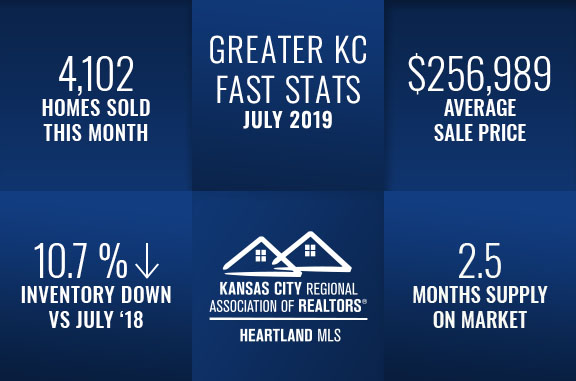In July, the U.S. economic expansion that began in June 2009 became the longest in the nation’s history, marking 121 straight months of gross domestic product growth and surpassing the 120-month expansion from 1991 to 2001. The average rate of growth during this expansion has been a milder 2.3 percent per year compared to 3.6 percent during the 1990s. Although the economy should continue to perform well for the rest of 2019, most economists see a mild recession on the horizon.

Closed Sales decreased 0.1 percent for existing homes and 6.8 percent for new homes. Pending Sales increased 5.6 percent for existing homes and 6.1 percent for new homes. Inventory decreased 11.9 percent for existing homes and 5.3 percent for new homes. The Median Sales Price was up 9.1 percent to $215,000 for existing homes and 8.0 percent to $384,900 for new homes. Days on Market decreased 8.8 percent for existing homes but increased 27.4 percent for new homes. Supply decreased 12.5 percent for existing homes but increased 3.6 percent for new homes.
During the record-setting 121-month economic expansion, the unemployment rate has dropped from 10.0 percent in 2009 to 3.7 percent, yet many consumers continue to struggle financially. Low mortgage interest rates have helped offset low housing affordability, but high home prices are outpacing median household income growth. In a move to stoke continued economic prosperity, the Federal Reserve reduced the benchmark interest rate by a quarter point to about 2.25 percent, marking the first reduction in more than a decade.
For more specific market numbers, click here.
*Information provided courtesy of KCRAR and Heartland MLS

